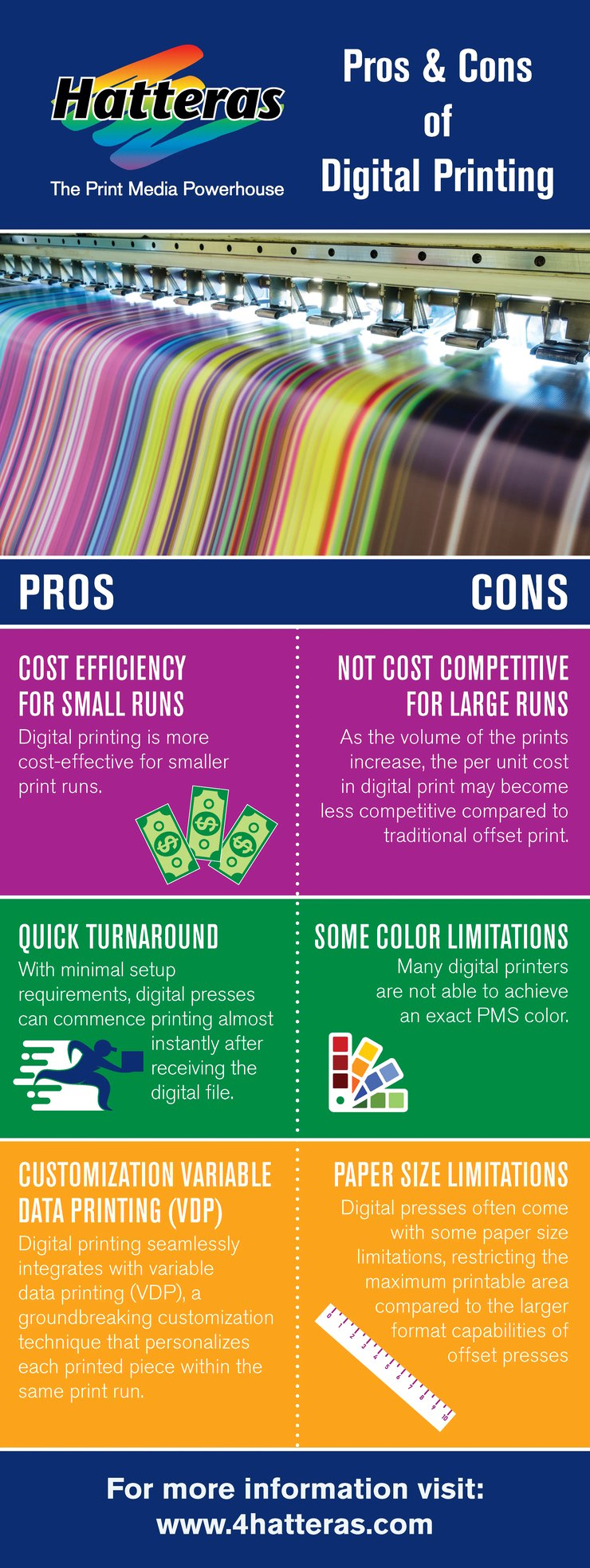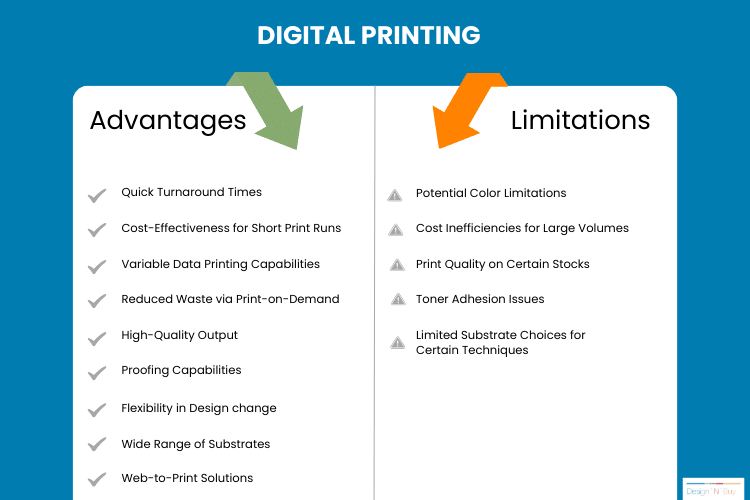4 Easy Facts About Digital Printing Explained
Table of Contents7 Simple Techniques For Digital PrintingDigital Printing Things To Know Before You BuyNot known Details About Digital Printing Some Of Digital PrintingThe Basic Principles Of Digital Printing 6 Easy Facts About Digital Printing Shown
Variable data printing, such as straight mail with personalized codes and addresses, is preferably fit for electronic printing. Digital fast printing just needs four steps of style, review, printing and binding to obtain every little thing done. Digital quick printing has an unmatched advantage: print on demand.According to PMMI, electronic printing enables brand names and producers to react swiftly to client demands while improving the supply chain, reducing warehousing price and waste, and taking pleasure in faster time to market. That all noises excellent, however just how does this modern technology do all that? The significant differentiator of these modern technologies is that there are no set up charges and no plates with digital printing.
The Only Guide for Digital Printing
According to Wikipedia, the best distinction between digital printing and conventional methods such as lithography, flexography, gravure, or letterpress - Digital Printing is that there is no need to change printing plates in electronic printing, whereas in these analog printing techniques home plates are repetitively changed. This leads to quicker turnaround time and reduces expense when using electronic printing.
Speedy production implies obtaining your item to market quicker. It additionally means it's simpler and faster to make modifications later on, when you transform a dish, add a SKU, or produce seasonal product packaging. Digital printing is highly adaptable, so it's easy to make modifications to the plan style quickly. Everything goes back to the plates.
More stock can indicate even more waste down the road. With standard printing approaches, short-run printing is just not feasible. Due to the fact that a great design can make or damage your item, digital printing consistently produces top notch, clear and vibrant graphics each time. Digital printing on adaptable bags adds the intense, dynamic, and precise graphics that virtually bid consumers to connect and touch them.
Digital printing is the procedure of printing digital-based images straight onto a selection of media substratums. There is no requirement for a printing plate, unlike with offset printing. Digital files such as PDFs or desktop publishing files can be sent directly to the electronic printing press to print theoretically, image paper, canvas, material, synthetics, cardstock and other substrates.
The Facts About Digital Printing Uncovered
According to PMMI, digital printing permits brand names and suppliers to respond swiftly to consumer needs while improving the supply chain, minimizing warehousing expense and waste, and delighting in faster time to market. That all sounds fantastic, but just how does this innovation do all that? The significant differentiator of these modern technologies is that there are no set-up charges and no plates with electronic printing.
According to Wikipedia, the best distinction between electronic printing and conventional methods such as lithography, flexography, gravure, or letterpress is that there is no need to replace printing plates in electronic printing, whereas visit site in these analog printing approaches home plates are continuously changed. This causes quicker turn-around time and reduces expense when using digital printing.

Some Known Questions About Digital Printing.
With standard printing approaches, short-run printing is just not possible. Because a terrific layout can make or break your product, electronic printing continually creates high-quality, clear and vibrant graphics each time.

According to PMMI, digital printing allows brands and makers to react swiftly to consumer demands while improving the supply chain, reducing warehousing cost and waste, and delighting in faster time to market. That all audios wonderful, but just how does this innovation do all that? The major differentiator of these technologies is that there are no set up fees and no plates with electronic printing.
Things about Digital Printing
According to Wikipedia, the biggest distinction in between electronic printing and conventional techniques such as lithography, flexography, gravure, or letterpress is that click for source there is no need to replace printing plates in digital printing, whereas in these analog printing approaches home plates are repetitively replaced. This causes quicker turn-around time and reduces price when making use of digital printing.
Digital printing is highly versatile, so it's simple to make modifications to the bundle style quickly. It all goes back to the plates.

Our Digital Printing Diaries
Digital printing is the procedure of printing digital-based photos Get More Info directly onto a variety of media substratums. There is no need for a printing plate, unlike with countered printing. Digital files such as PDFs or desktop computer publishing data can be sent directly to the electronic printing press to publish theoretically, picture paper, canvas, textile, synthetics, cardstock and other substratums.